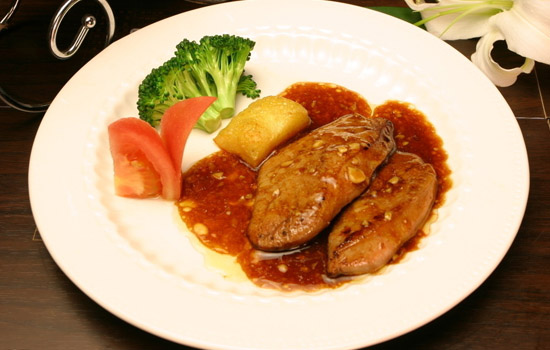
 |
| (Shanghai Daily) |
Foie gras, a controversial jewel in the French culinary crown, is one of a few delicacies many people love to hate.
Foie gras, or fat liver, is the greatly enlarged liver of a goose or duck fattened by force-feeding, usually with a tube two or three times a day.
Foie gras is praised for its creamy and smooth texture as well as buttery liver flavor, but its production is criticized as barbaric by many animal rights groups that seek to ban the product.
Criticism hasn't slowed producers and foie gras remains popular worldwide, including in China and Japan where there is no foie gras tradition.
The period from October to March is usually the prime foie gras season due to high European production.
Chefs integrate the foie gras into their own culinary style, creating diverse flavors and textures.
"Avoid too much preparation overpowering the natural flavor, avoid overcooking to preserve the mild texture and highlight a pleasant sweet-and-salty flavor. That's the classical French way with foie gras," says Frenchman Christophe Truchet, sous chef at Jade on 36 in Pudong Shangri-La, East Shanghai.
Foie gras may be hot or cold. Traditional low-heat cooking results in terrines, pates and mousses that highlight the flavor. Hot-pan cooking sears the liver to highlight the texture, crispy outside and creamy inside.
Both liver and eel are pan-fried and topped with duck sauce. It's served with black cherry compote to add sweetness. Fragrant lime and rose petals are sprinkled on top. The dish balances sweet and salty flavors; eel and foie gras have similar textures.

















 Sanitation worker, environmental protector in city
Sanitation worker, environmental protector in city


![]()
